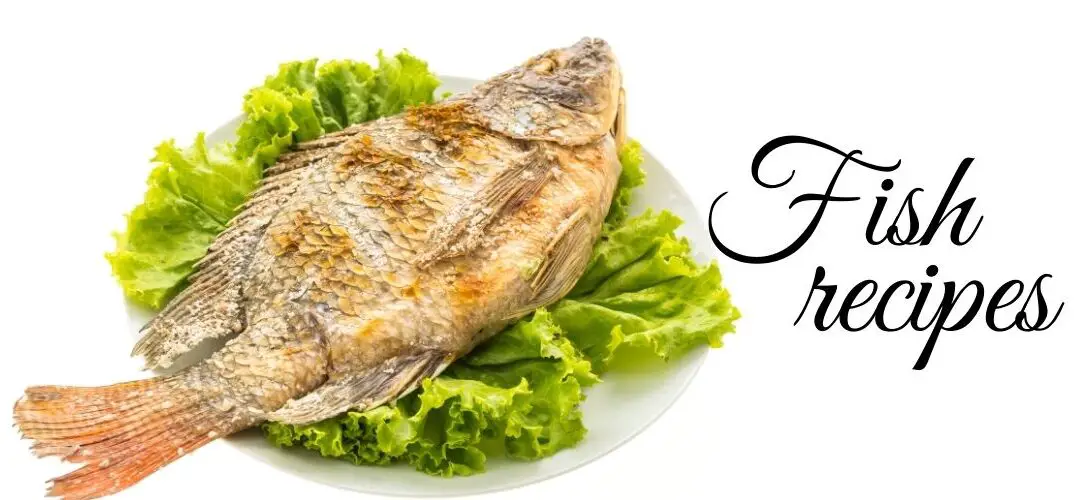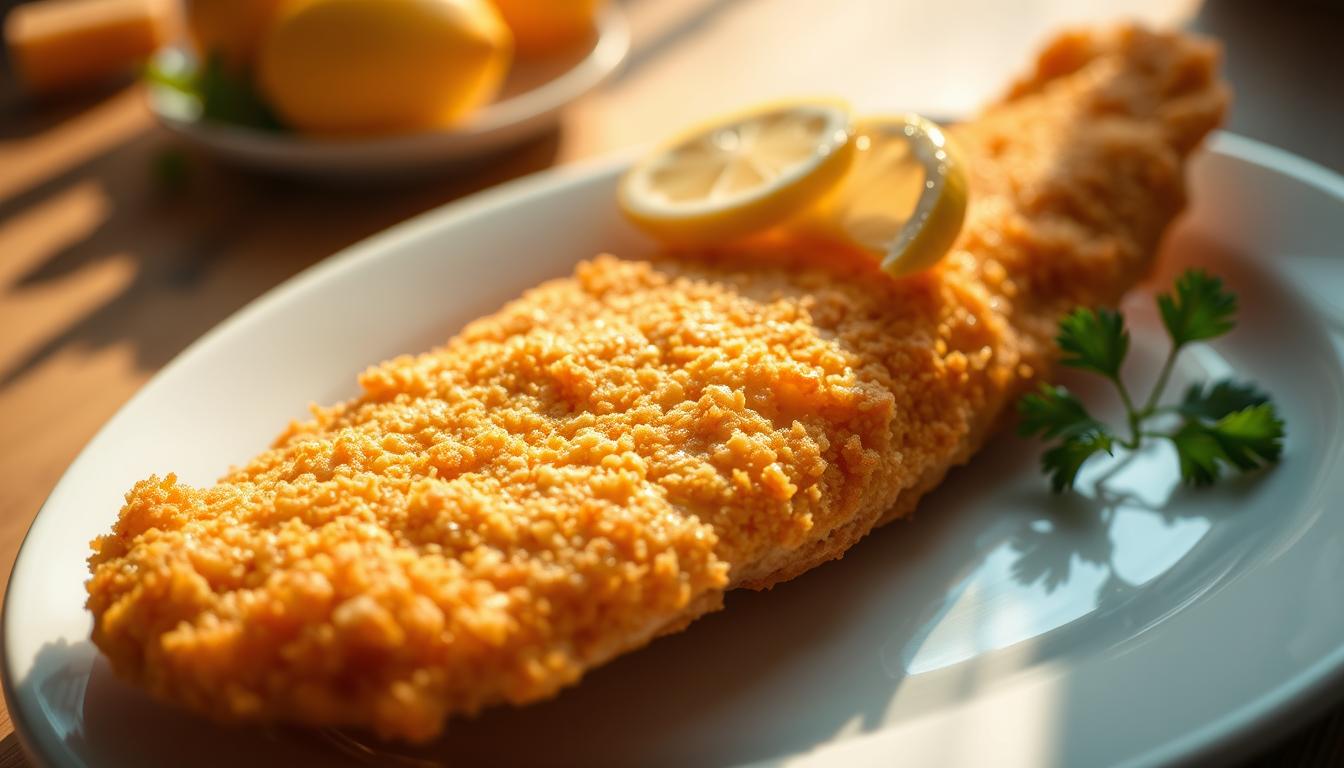Haddock Fish vs Cod: Which One Is Better for Frying?
The sound of fish hitting hot oil brings back seaside summers and family gatherings. As a seafood lover, I’ve found that the right fish makes a fried haddock meal special.
Fried fish is a favorite in American cuisine. Haddock and cod are often compared for the best fish fry.
Haddock and cod are in the same family, making them great for seafood fans. Knowing their differences can make your fish fry amazing.
Key Takeaways
- Haddock and cod are both excellent options for frying
- Each fish has unique flavor profiles and textures
- Cooking method can significantly impact taste and quality
- Sustainability is an important factor in fish selection
- Proper oil temperature is crucial for perfect fried fish
Table of Contents
Understanding the Key Differences Between Haddock and Cod
When you’re looking at white fish recipes, knowing the differences between haddock and cod is key. These two fish are similar but have unique traits that affect their taste and health benefits.
Exploring these fish reveals interesting differences that can make your cooking better. Let’s look at what makes each fish special.
Physical Characteristics and Appearance
Haddock and cod look different in ways that seafood lovers notice:
- Haddock has a dark lateral line and a “thumbprint” behind its pectoral fin
- Its body has a cream line on a white-silver background
- Pacific Cod has a speckled grey to reddish-brown color
- Cod has a less noticeable lateral line
Natural Habitat and Distribution
These fish live in different parts of the ocean, which shapes their features:
- Haddock likes water between 50 and 300 meters deep
- It thrives in temperatures above 2 degrees Celsius
- Found mainly in the North Atlantic
- Pacific Cod lives in wider ocean areas
Common Uses in Cuisine
Knowing how to use haddock and cod in recipes helps you choose the right one:
- Haddock has a delicate, slightly sweet taste
- Great for fish and chips, stews, and pan-frying
- Cod has a mild, neutral flavor with a hint of saltiness
- Perfect for grilling, baking, and many other cooking methods
Both haddock and cod are great alternatives to cod, offering unique tastes and textures for your seafood dishes.
Taste and Texture Comparison
Exploring white fish recipes means knowing the taste and texture of haddock and cod. These two fish offer unique flavors and textures that can make your dishes stand out.
Haddock has a delicate flavor profile. It tastes slightly sweet with a hint of nuttiness. Its flaky texture makes it great for dishes needing a tender fish.
- Flavor characteristics of haddock:
- Subtly sweet taste
- Gentle nutty undertones
- Delicate, flaky texture
- Flavor characteristics of cod:
- Mild, neutral taste
- Lightly briny notes
- Firmer texture with larger flakes
Pacific Cod offers a different taste experience. Its mild flavor is perfect for adding seasonings and cooking techniques. Cod’s firmer texture is great for grilling or frying.
Choosing between haddock and cod depends on your dish. Haddock is great for fish stews. Cod is perfect for fish and chips.
Fried Haddock vs Fried Cod: A Detailed Analysis
Planning the perfect fish fry means knowing the differences between haddock and cod. Each fish has its own traits that affect how you prepare your beer-battered fish.
Beer Batter Performance
Beer-battered fish needs the right techniques for crispy perfection. Each fish reacts differently to the batter:
- Haddock makes a lighter, more delicate crispy coating
- Cod creates a thicker, more substantial crispy layer
- Batter absorption varies between these fish species
Oil Temperature Requirements
Getting the oil temperature right is key for a great fish fry. The ideal frying conditions are slightly different for haddock and cod:
- Recommended oil temperature: 350-375°F
- Haddock needs a bit lower temperature because of its delicate texture
- Cod can handle higher heat without losing moisture
Cooking Time Variations
Cooking times are important for perfect beer-battered fish. Here are some guidelines:
- Standard cooking time: 3-4 minutes per side
- Haddock cooks faster to avoid overcooking
- Cod can handle slightly longer frying times
Trying both fish types can help you find your favorite beer-battered fish method. Each fish brings a unique texture and flavor that can make your fish fry special.
Nutritional Value and Health Benefits
Haddock is a top pick for those looking for sustainable seafood. It’s full of nutrients and has a great protein-to-fat ratio. A 150-gram filet of haddock has about 135 calories.
Eating haddock can really boost your health. It’s packed with nutrients that help your body work right:
- High protein content for muscle maintenance
- Low mercury levels ensuring safe consumption
- Rich in omega-3 fatty acids
- Supports heart and brain health
Haddock is also rich in minerals. It has a good balance of potassium and sodium. This helps keep your body’s fluids in check. Plus, its omega-3s might lower heart disease risk and boost brain function.
| Nutrient | Amount per 150g Serving | Health Benefit |
|---|---|---|
| Protein | 20g | Muscle growth and repair |
| Omega-3 Fatty Acids | 1.5g | Heart and brain health |
| Sodium | 350mg | Electrolyte balance |
| Potassium | 450mg | Blood pressure regulation |
The American Heart Association says eat fish at least twice a week. Haddock is a great choice because it’s low in mercury and full of nutrients. It’s a top pick for healthy, sustainable seafood.
Sustainability and Market Availability
Choosing fish for your New England dishes means knowing about sustainable seafood. The seafood world is facing big problems. Experts say we might run out of fish by 2050 if we keep fishing at current rates.
Choosing sustainable seafood helps keep our oceans healthy. The Marine Stewardship Council (MSC) helps guide us. They check if fishing is done right by looking at three main things:
- Stock sustainability
- Ecosystem impact
- Effective management
Fishing Practices and Conservation
Good fishing methods protect our oceans. Pole-and-line and trap fishing are better for the sea. They cause less damage and catch fewer unwanted fish. This helps keep fish populations strong.
Price Variations and Seasonality
Choosing seafood in season has many perks. Fresh fish tastes better and helps nature. Prices change with the seasons, and sustainable fish can be a better deal in the long run.
Market Accessibility
It’s easier than ever to find sustainable seafood. Look for MSC blue labels on wild fish and ASC green labels on farmed fish. These labels mean you’re choosing seafood that’s good for the planet.
Conclusion
Fish and chips are a big hit in pubs, and haddock and cod are top choices. Your pick depends on what you like and the dish you’re making. Haddock has a sweet taste that’s soft, while cod is neutral and great for soaking up flavors.
Both fish are full of protein, making them good for you. Pan-fried haddock, for example, has 32 grams of protein and important vitamins like B12 and selenium. Its light texture is perfect for fish and chips, giving it a crispy outside.
How you cook the fish is just as important as what fish you choose. Keep the oil hot, between 350°F and 375°F. Make sure each piece has room in the pan for a golden crust. Whether it’s haddock or cod, your cooking can make it taste like a restaurant.
Try both fish to find your favorite. Each has its own special qualities. Don’t be afraid to experiment and see which one you like best.

